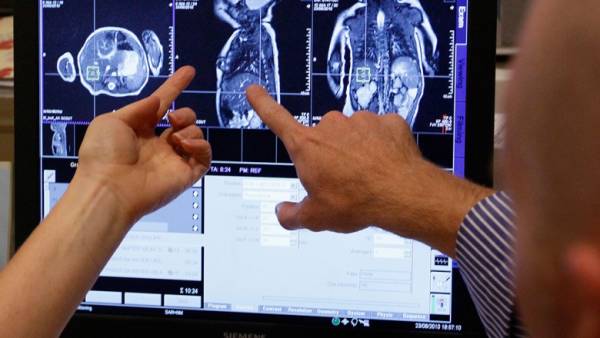Neuroscientists have discovered the heart of pessimism in the human brain
MOSCOW, 10 APR — RIA Novosti. Scientists from MIT have discovered a special brain region, stimulation of which makes a man or monkey inveterate pessimists, not able to believe in anything positive. Their findings were presented in the journal Neuron.

“This region seems to be responsible for responses associated with anxiety or depression, or a combination thereof. Typically, these mental problems are extremely difficult to treat, and now we have the chance to uncover the roots of their origin,” says Anna Graybill (Ann Graybiel) from the Massachusetts technological University (USA).
In recent years, scientists have discovered several regions of the brain responsible for different character traits of humans and animals, including risk appetite, and the fairly complex behavioral programs, the presence of which their owner doesn’t even know.
News how old do you feel? Your future depends on it
how old do you feel? Your future depends on it
For example, in January of last year, biologists from Yale University discovered a kind of “predator program” in the mouse brain, the inclusion of which makes it superaggressive creature, ready to attack, chase and hunt any animal or object. Next to this behavioral center is another similar area that causes the animal to experience fear and try to escape from its source.
As noted, Grabill, scientists have long been interested in what region of the brain responsible for the formation of different complex emotions and reactions to various events in his life, and what violations in their work lead to the development of the “Afghan syndrome” of obsessive-compulsive disorder, schizophrenia, depression and other mental illnesses.
A few years ago her team discovered a special area inside the so-called striped nucleus of the brain, which helps a person to weigh all the pros and cons of possible options, and then abandon them or sell them.
People suffering from depression and pessimism, it virtually always underestimate the abilities and capabilities of other people. This gave scientists the idea that these problems can be associated with disorders in the striped core. They checked whether this is actually of watching the varied activity of this part of the brain in the head several monkeys playing in the monkey analogue of the game with the knife and fingers.
News Scientists said, what foods reduce anxiety
Scientists said, what foods reduce anxiety
In its framework on the computer screen displayed two bands, one of which denotes the amount of juice that will receive the Primate, if he will agree to withstand a shot from an air cannon while standing next to the display. The second line, respectively, served as the indicator of force of impact.
If the monkey were not prepared to bear unpleasant air “cotton” in the face, because the reward for it was too small, she could hit a button that delivered her from the torment, but significantly reduced the size of food portions.
Note the typical level of “optimism” and “pessimism” among the monkeys, the scientists checked how to change their attitude to risk, stimulating different chains of nerve cells in the striatum, presumably associated with work center risk.
After a few days of such experiences, Grabel and her team came across a set of neurons, the stimulation of which turned even the most bold and open to risk in macaques inveterate pessimists, always choose the more secure option.
Most interestingly, these changes in their psychology was constant long enough if the scientists stimulated these cells. As noted, Grabill, monkeys returned to normal only after a long “therapy” — about three hundred rounds of the game without tampering with the striped body.
These changes have changed the pattern of activity in this part of the brain, making it more similar to those brainwaves that doctors record during observations for people suffering from OCD, depression and anxiety. According to neuroscientists, this suggests that irregularities in the striped body can be one of the main reasons for the development of these diseases.